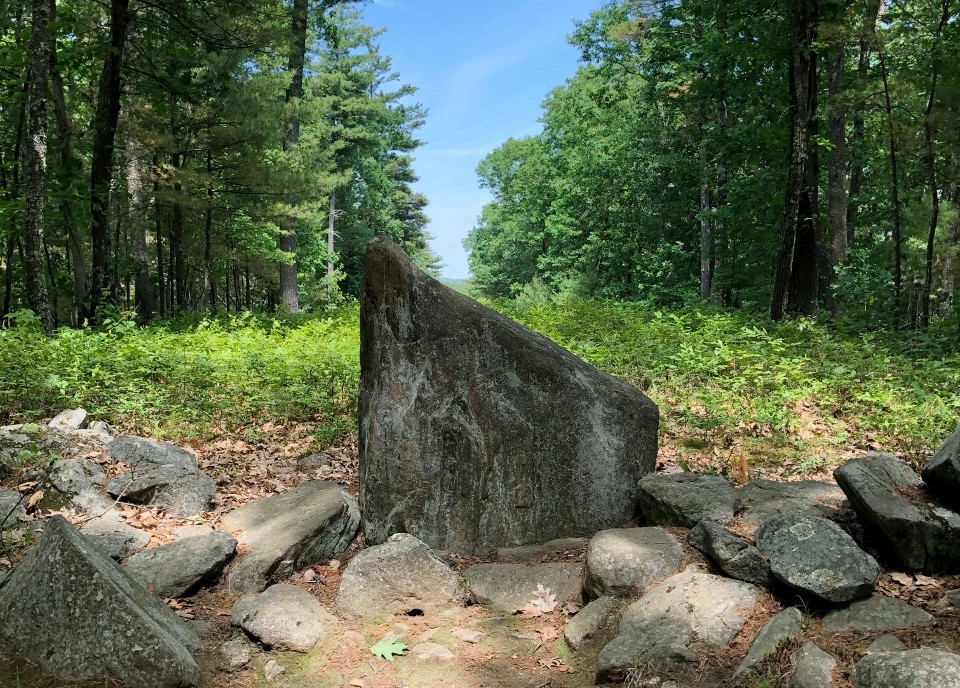
Surprising Stonehenge
Where are you traveling or have you traveled this summer? If you are like me, archaeological sites and other historical locations are high on your bucket list of top destinations. One place that has always intrigued me is Stonehenge. Now I obviously could not travel to Stonehenge in the UK, as Europe has closed its doors to Americans for now, and I can’t say that I blame them. BUT I DID visit America’s Stonehenge this summer!
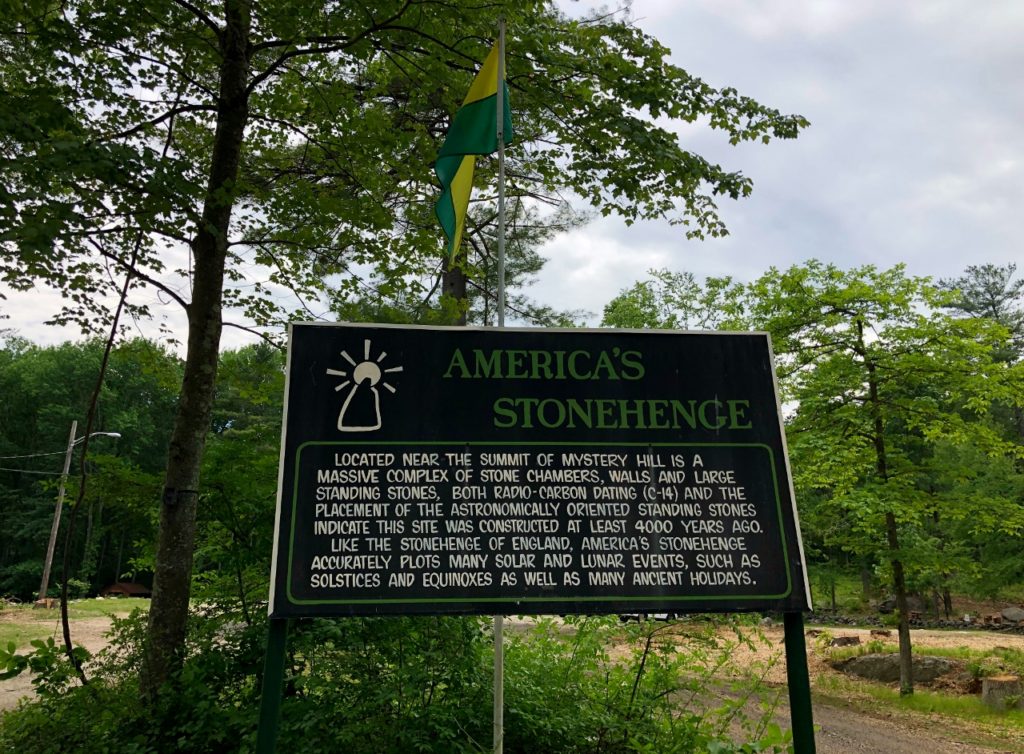
What? You’ve never heard of it? Well, I had never heard of it before either until I ran across a brief description in my DK New England guidebook! As a history teacher, the name alone piqued my interest, and I wondered at how I had never heard of it before! So, I added it to our road trip agenda that had mostly consisted of hiking and covered bridges, and it did not disappoint!
America’s Stonehenge (formerly Mystery Hill Caves) is just outside of Salem, New Hampshire, and has a very intriguing enigmatic history! I should note that not everyone agrees about the historical significance of this site. It was even featured on the History Channel’s History’s Mysteries series several years ago. You can find the episode online. Or, for $13 per adult and $7.50 per child 5-12 (they do have senior and veteran discounts), you can visit the site, download the mobile app (or grab a hard copy of the guide), walk the mile round trip tour, and decide for yourself what you believe! I found it fascinating!
The site is open every day from 9-5 with the exception of Thanksgiving and Christmas, and it does have a very small museum section within the gift shop. It is presented as a 4,000 year old bronze age astronomical site (thought to be the oldest of its kind in North America). While skeptics cite a lack of archaeological evidence to support this, supporters point out that there is also a lack of archaeological evidence inside of England’s Stonehenge.
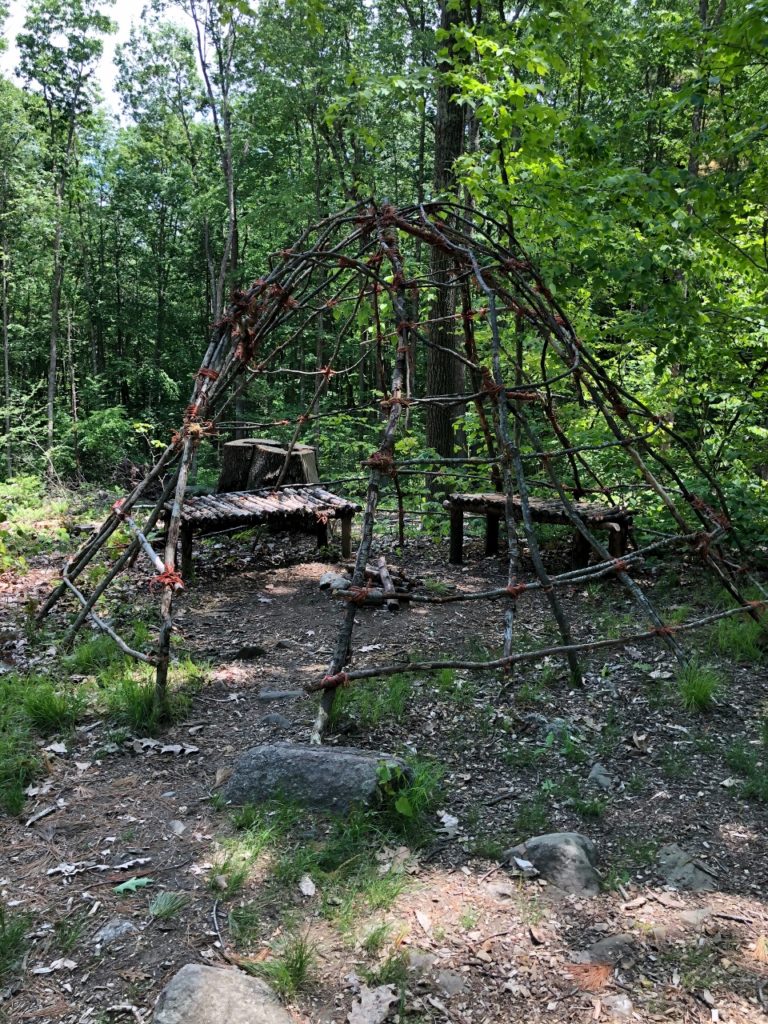
The origins, purposes, and builders of the structures continue to be topics of research and investigation. Limited evidence exists to suggest that the area may have been occupied by Phoenicians based upon inscriptions in a stone found on the site, followed by the Celts, based upon Ogham inscriptions found at the site. Plenty of evidence was discovered linking Native Americans to the site followed by colonial settlers, who would have been the most recent inhabitants (and not surprisingly part of the problem with authentication – I will get to this).
The trail for the tour of the site begins just beyond the visitor center where you can see recreations of the frame of a wigwam and a dugout canoe. Both of which were discovered on the property and estimated to be 2,000 years old. The museum in the visitor’s center has some Native American artifacts on display.
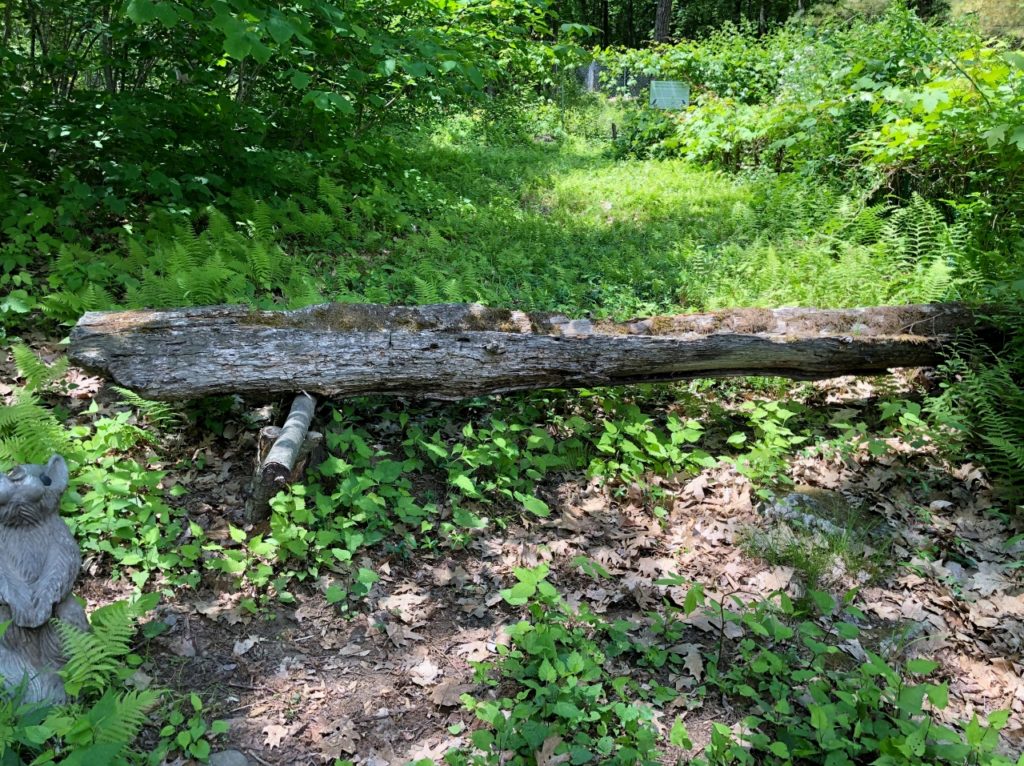
As you continue walking, the first neolithic, if you will, structure you arrive at is called the Watch House, because it is outside of the main site. It is possible that this was a burial chamber. The chamber also aligns with the sunrise on the Pagan holiday Imbolc honoring the Celtic goddess Brighid and the nearing of spring. This is one of the many structures on the site that reminded me of those I saw when I visited both Skara Brae in the Orkney Islands of Scotland and Beehive Huts on the Dingle Peninsula in Ireland, which also happens to be my favorite place in the world (read more about it here)!
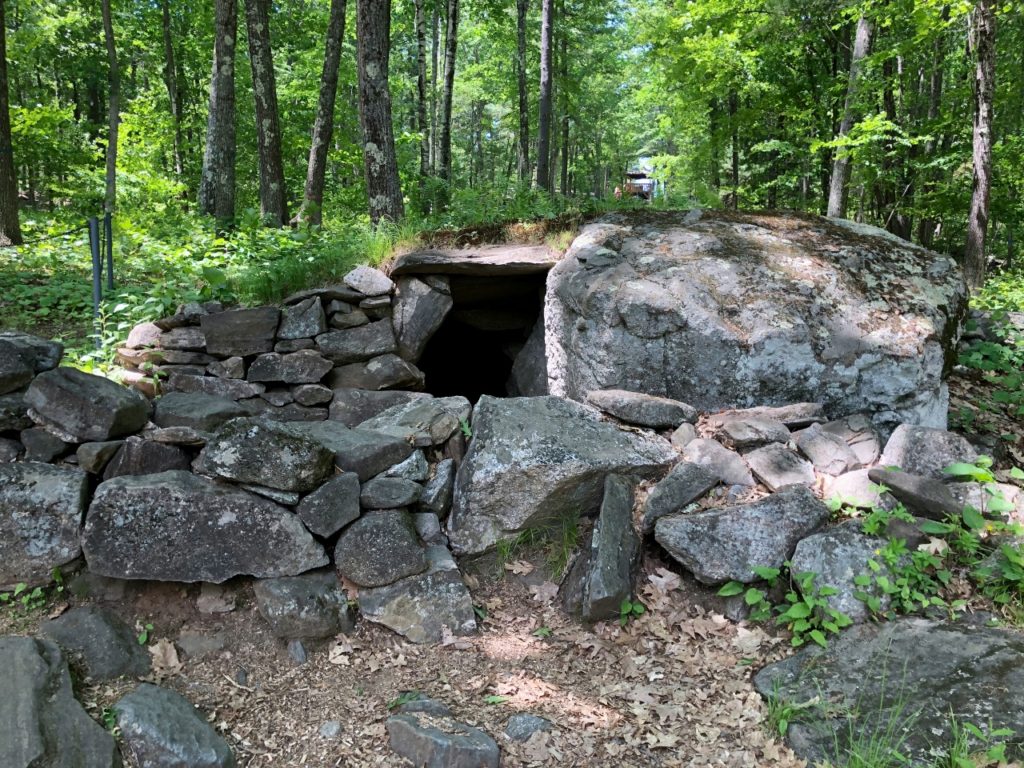
From the Watch House, you will travel up a “road” that is lined with stones on either side. Within this road is the (fallen) Winter Solstice Monolith. One suggestion I would make for the site is to improve its signage. I was never quite sure I found this Winter Solstice Sunrise stone, as it was not clearly marked. Was number 3 the walled path or the fallen monolith? We had the same problem when trying to locate the site of one of the fire pits at the end of the road. Also near the end of the road is a well built in a way consistent with ancient stone walls.
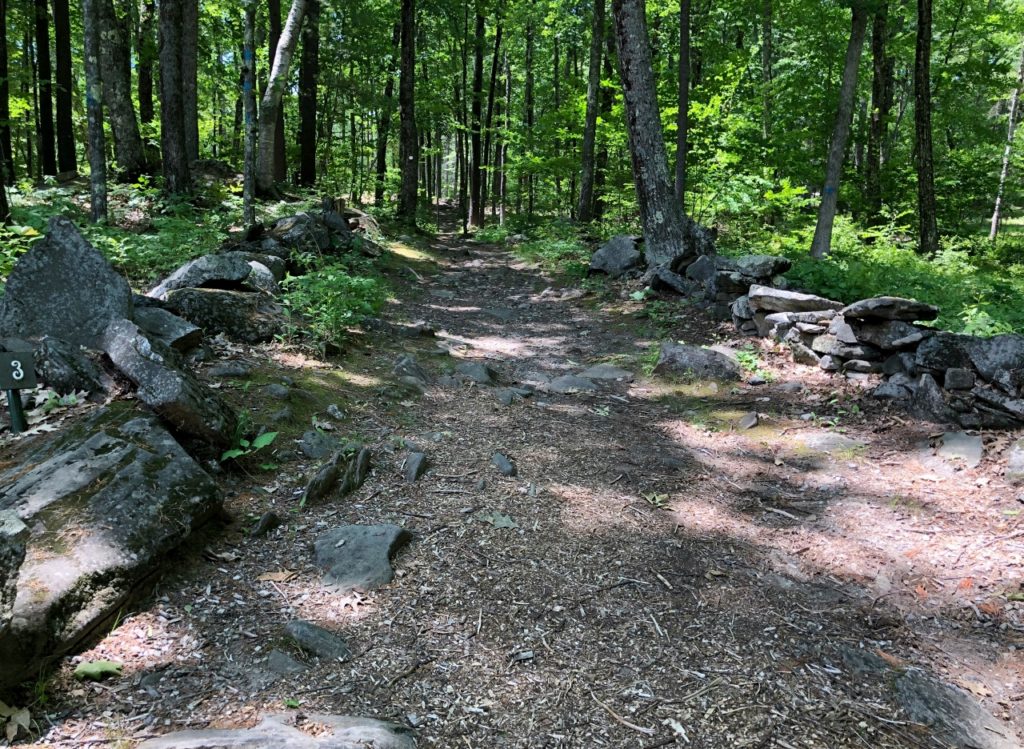
From here you are ready to enter the main site, which was fenced off in the 1930’s by its then owner, William Goodwin, as a means of protecting it. Goodwin believed the site had been built by Irish Monks based upon the similarities of the structures to ones he had observed in Ireland. Unfortunately, Goodwin likely destroyed more than he discovered in trying to prove his theory.
You will encounter another problem in proving the historical significance of the site at the first group of structures inside the fence, the Pattee Area. A man by the name of Jonathan Pattee owned the property in the early to mid 1800’s, and used part of the walls as the foundation for his house. He also sold off a lot of the original rock and used a few of the chambers as cellars. Pattee also used the chambers to house and hide runaway enslaved persons escaping on the Underground Railroad. Manacles were found on the site and are on display in the gift shop museum.
There are quite a few other chambers in the main site that are intriguing. One is the V Hut, which may very well be a wedge tomb. Another is the East-West Chamber, which also could have been a tomb.
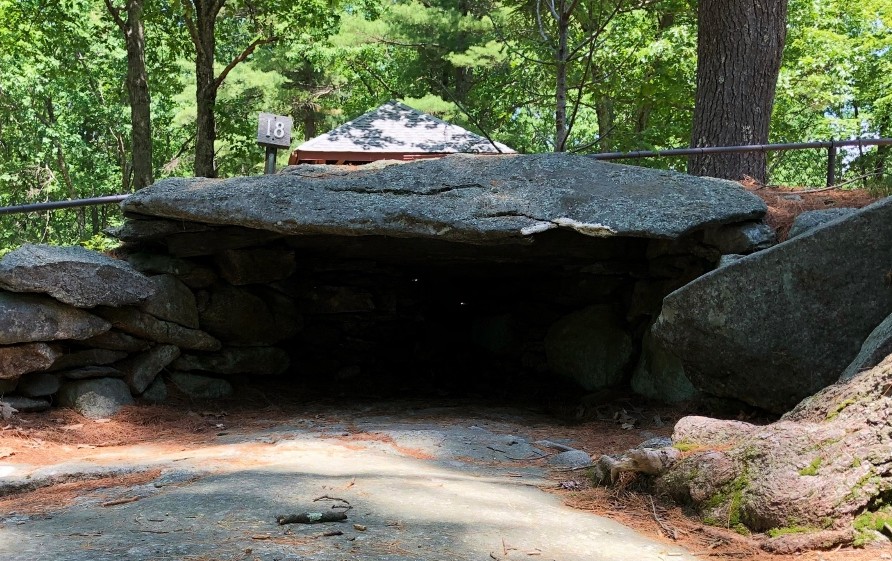
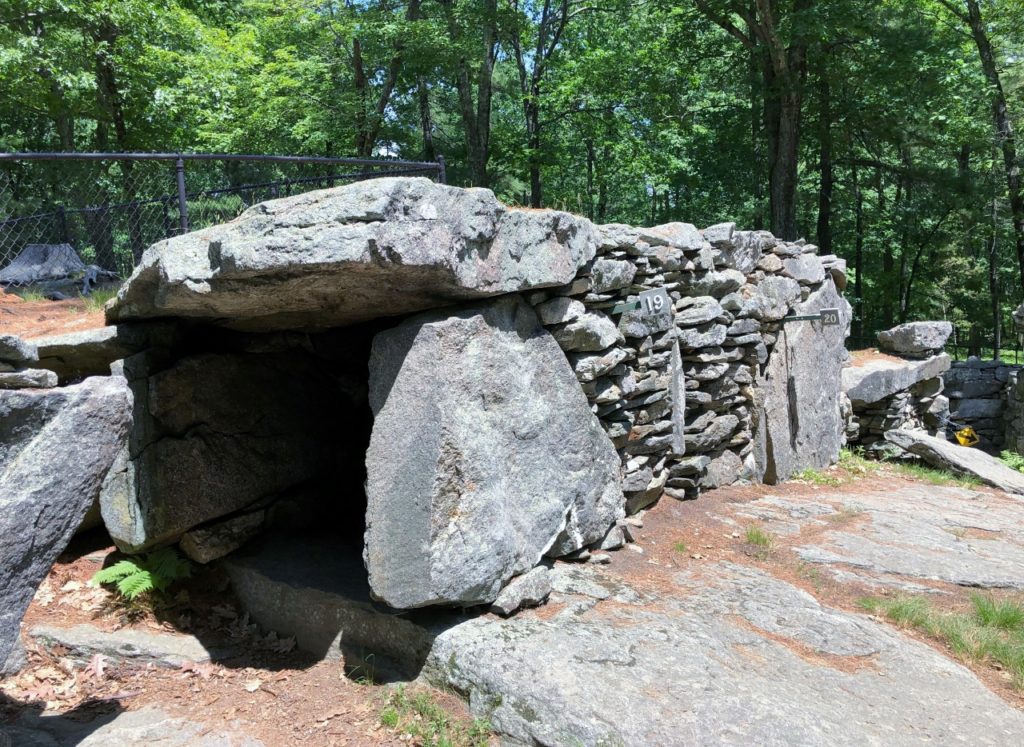
The most interesting chamber, however, is the Oracle Chamber! This chamber holds what has been named the Secret Bed. It is actually a niche hidden in the wall just large enough for a person to fit into. Just above it is an opening to the Speaking Tube. The opening to the other end of the Speaking Tube is beneath the Sacrificial Table (we will get to this in a moment). You can actually walk through the Oracle Chamber and observe its Secret Bed, Speaking Tube, skylight, a bench seat, an alcove possibly for a shrine, and a petroglyph of a deer. If I weren’t so afraid of snakes and spiders, I might have been tempted to try out the Speaking Tube from the Secret Bed! Haha!
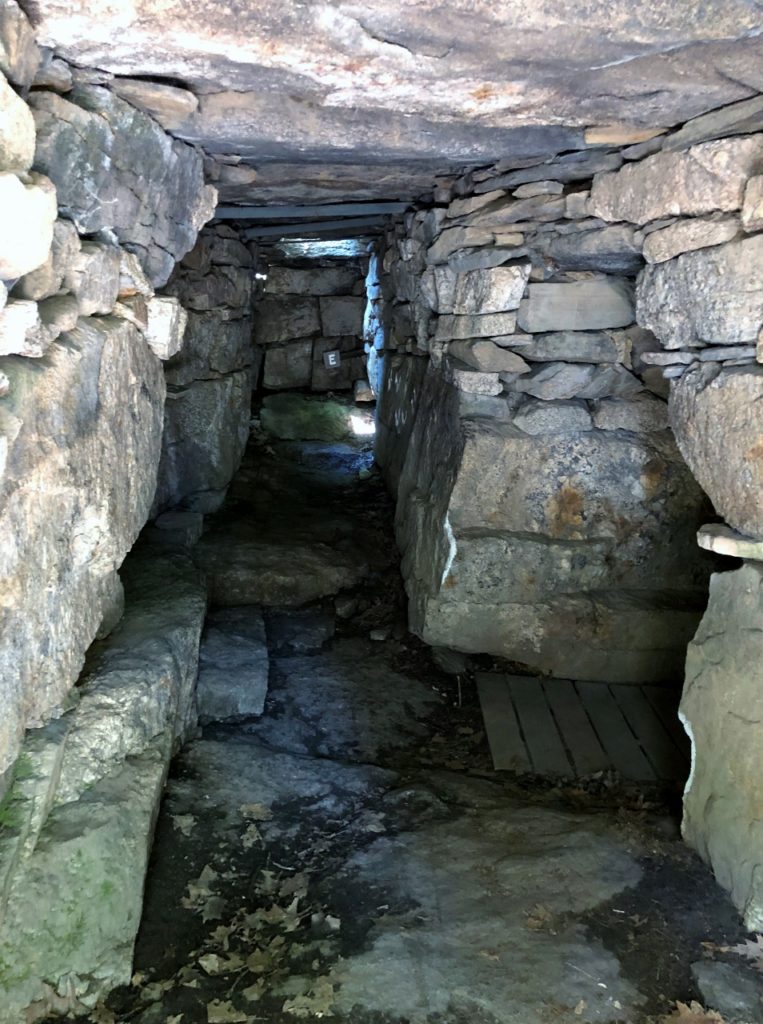
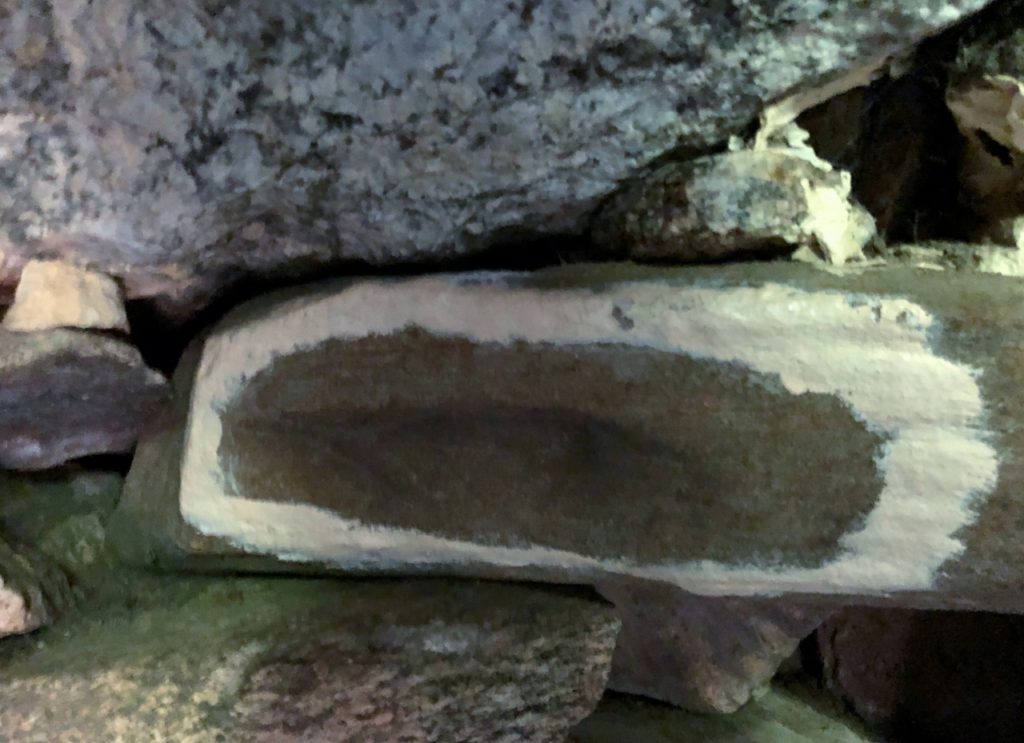
Upon exiting the Oracle Chamber, you will see the Astronomical Platform. This is a modern structure, an elevated gazebo that allows you to observe the astronomical calendar formed by the standing stones on the site. They are all labeled and you have a great 360° view, so be sure not to skip it! You will have the opportunity to walk some of the astronomical site when you exit the main site, and this will help you orient yourself!
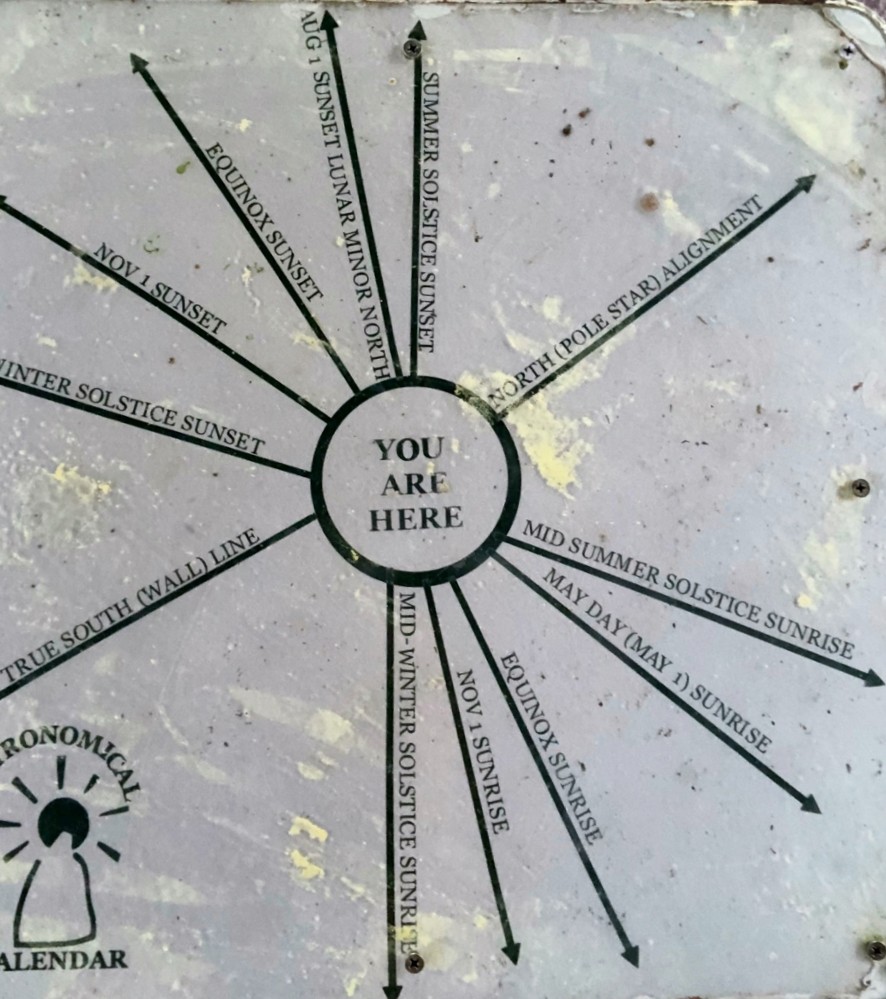
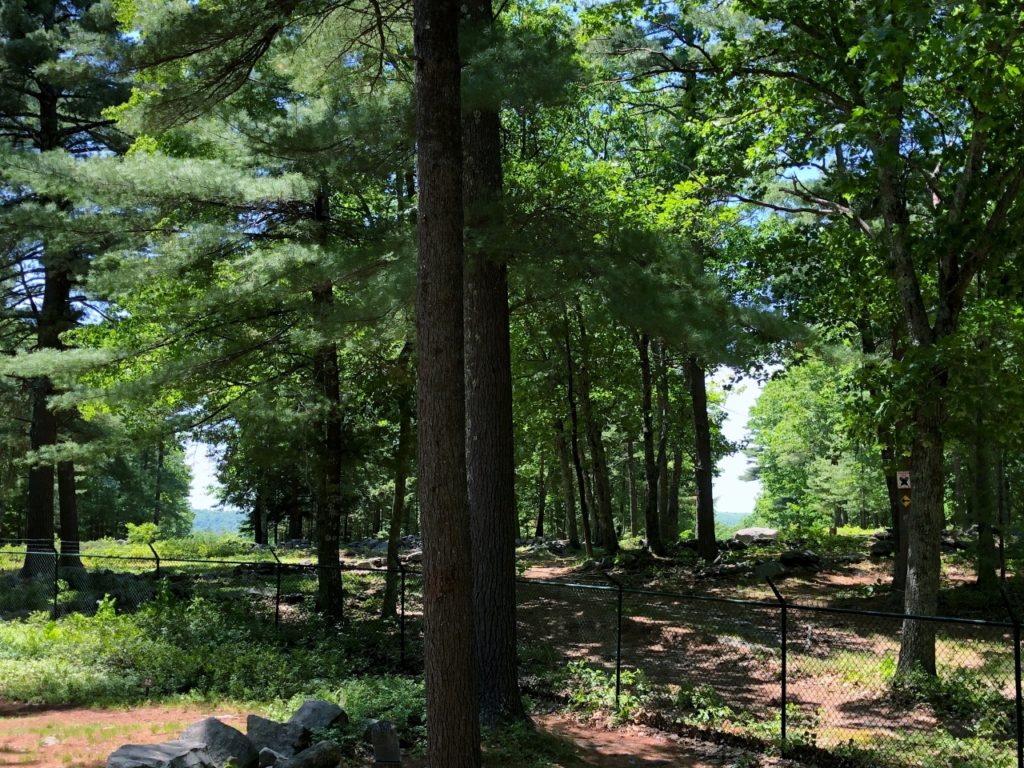
From the gazebo, walk up the slight hill to the observation area for the Grooved (Sacrificial) Table. This is by far the most ominous yet fascinating part of the main site. This slab of rock weighs over 4 tons! It has a groove carved around the edge and off the edge in one place. It is believed that the table was used for ceremonial purposes. Remember the Speaking Tube in the Oracle Chamber? It exits beneath this table meaning that it would give the appearance that the table (or what was on it) was speaking!
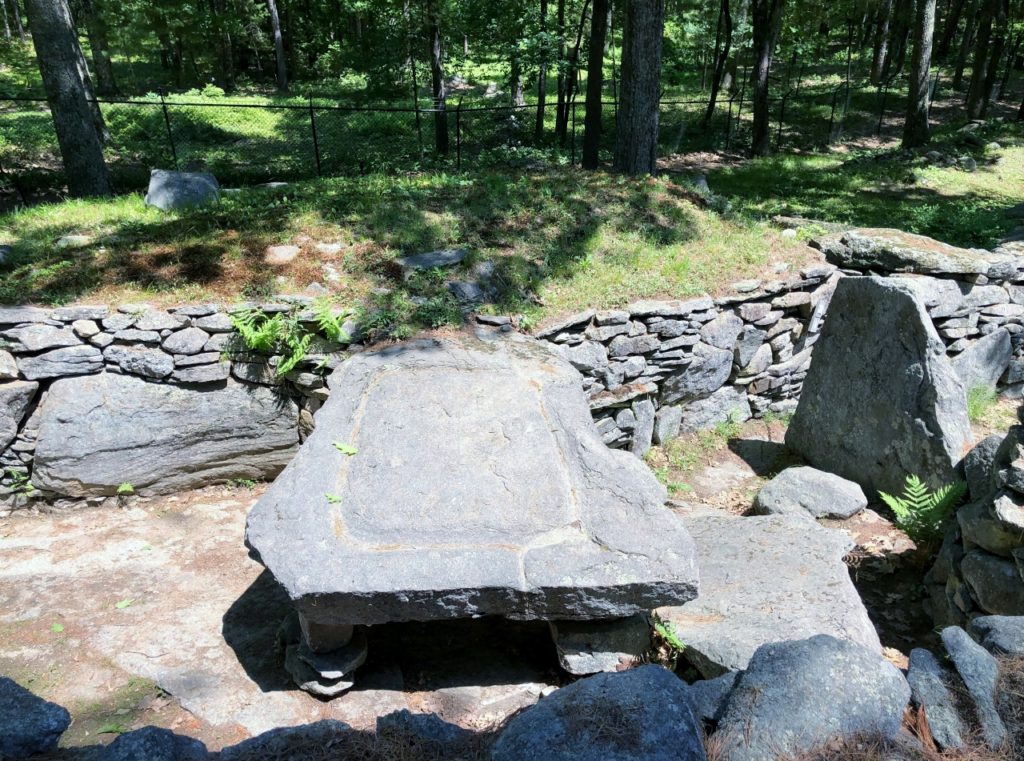
You are now ready to exit the main site and walk a large part of the astronomical site. You will be able to walk to the Winter Solstice Sunset Monolith, which captures the sunset on the shortest day of the year; February 1 and November 1 Sunset alignment stones, which correspond to the Celtic holidays of Imbolc and Samhain; Equinox Sunset Alignment stone; a wall that aligns to the lunar cycle and the August 1 Sunset, which corresponds to the Celtic holiday Lughnasa; Summer Solstice Sunset Monolith; North (Pole Star) Alignment Stone, which shows true north; Summer Solstice Sunrise Stone; May Day Monolith, which corresponds to the Celtic holiday Bealtaine; the fallen Equinox Sunrise Stone; and the November 1st Sunrise Stone, again Samhain. Remember, you pass the (fallen) Winter Solstice Sunrise Monolith (somewhere) on the walled path on the way to the main site.
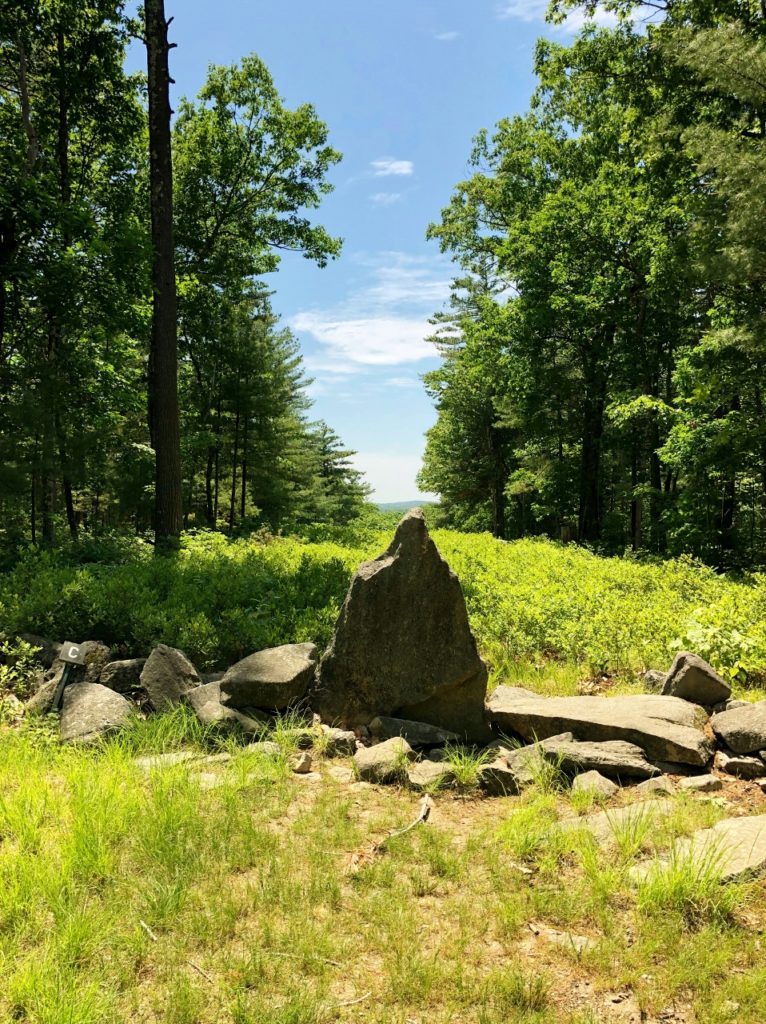
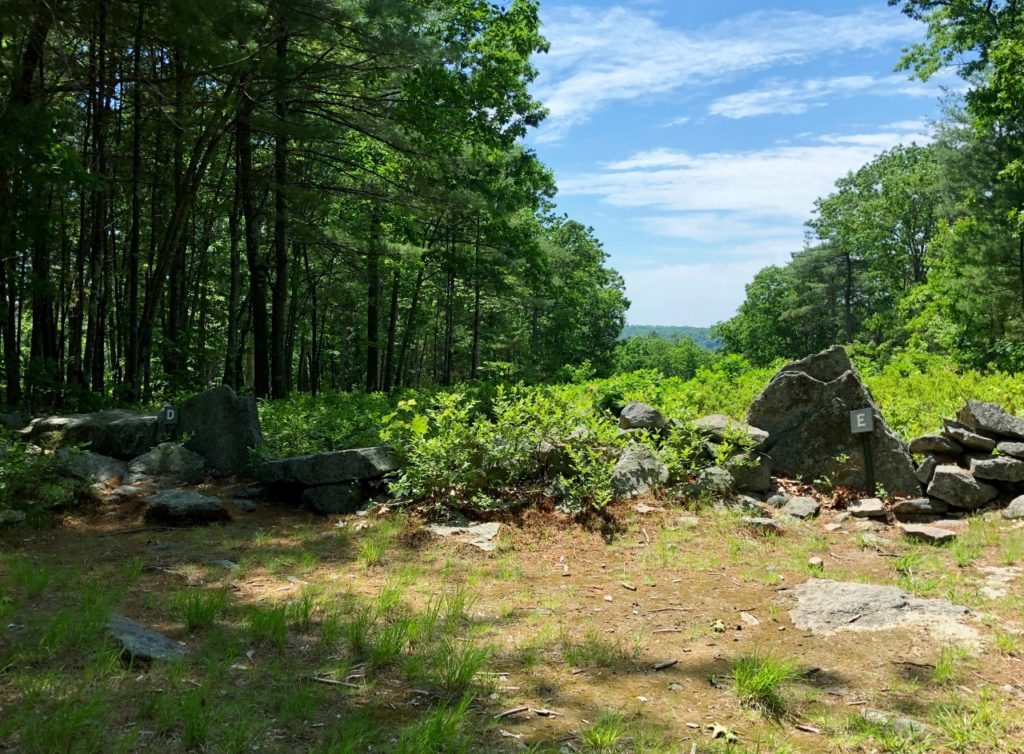
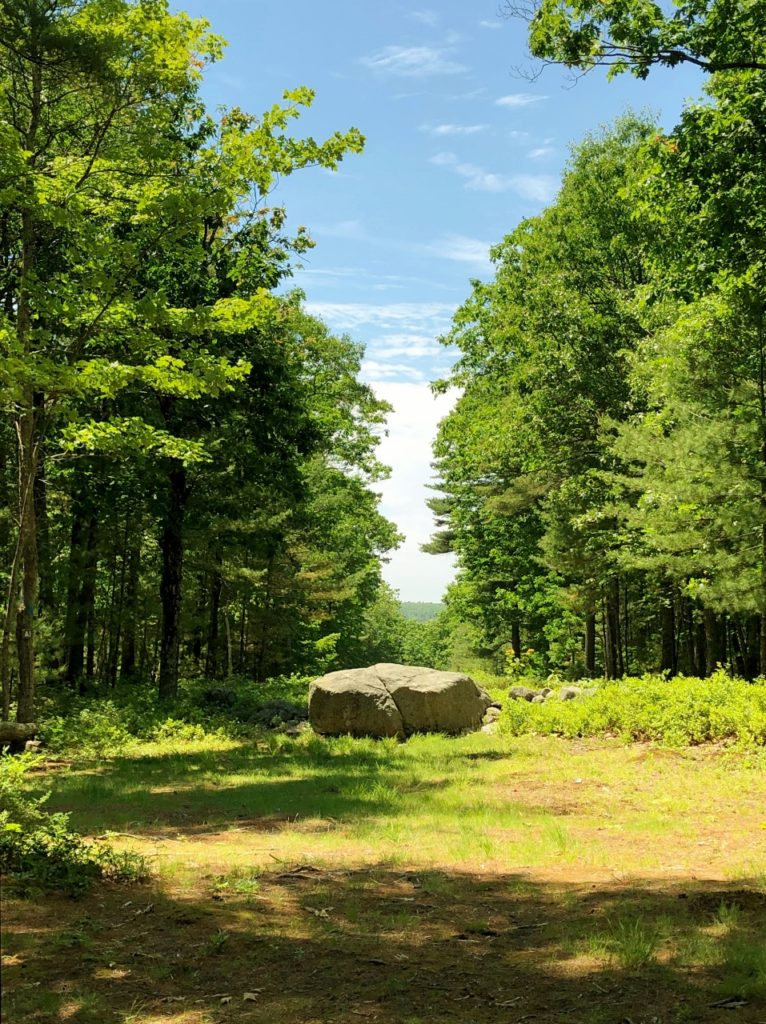
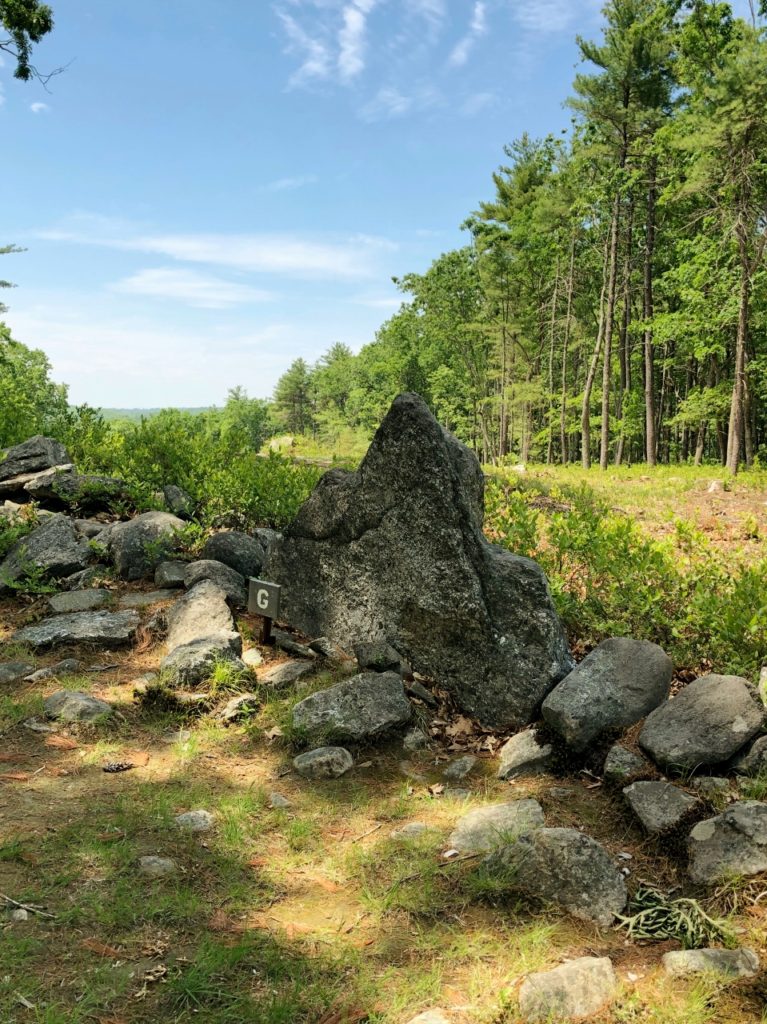
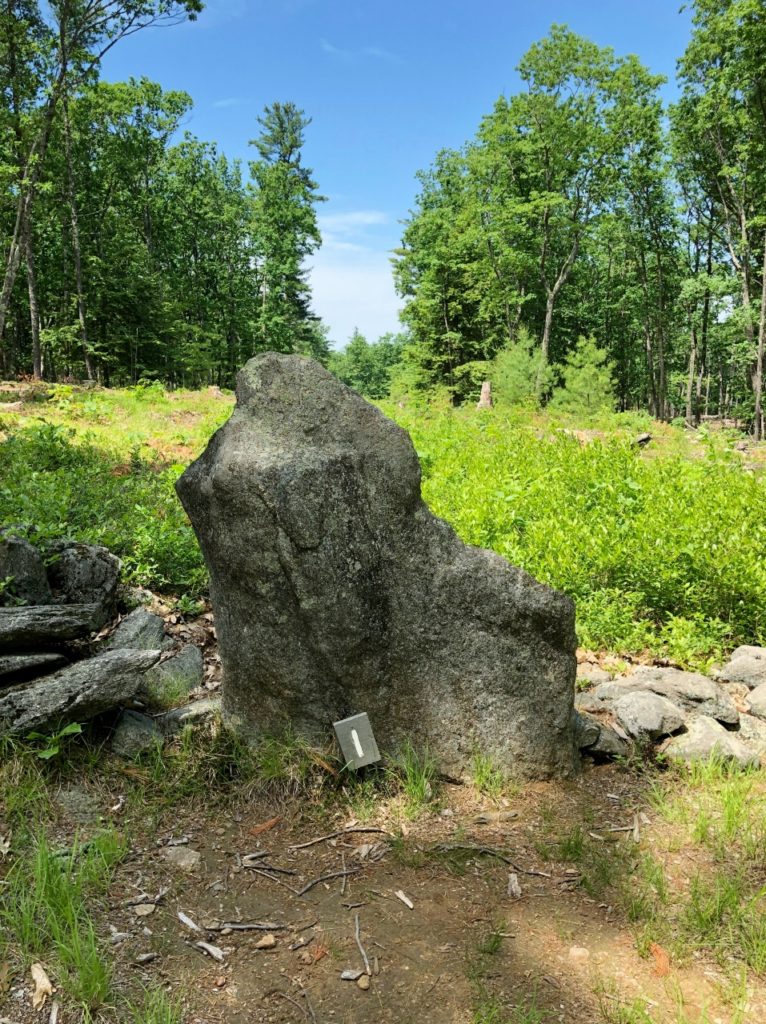
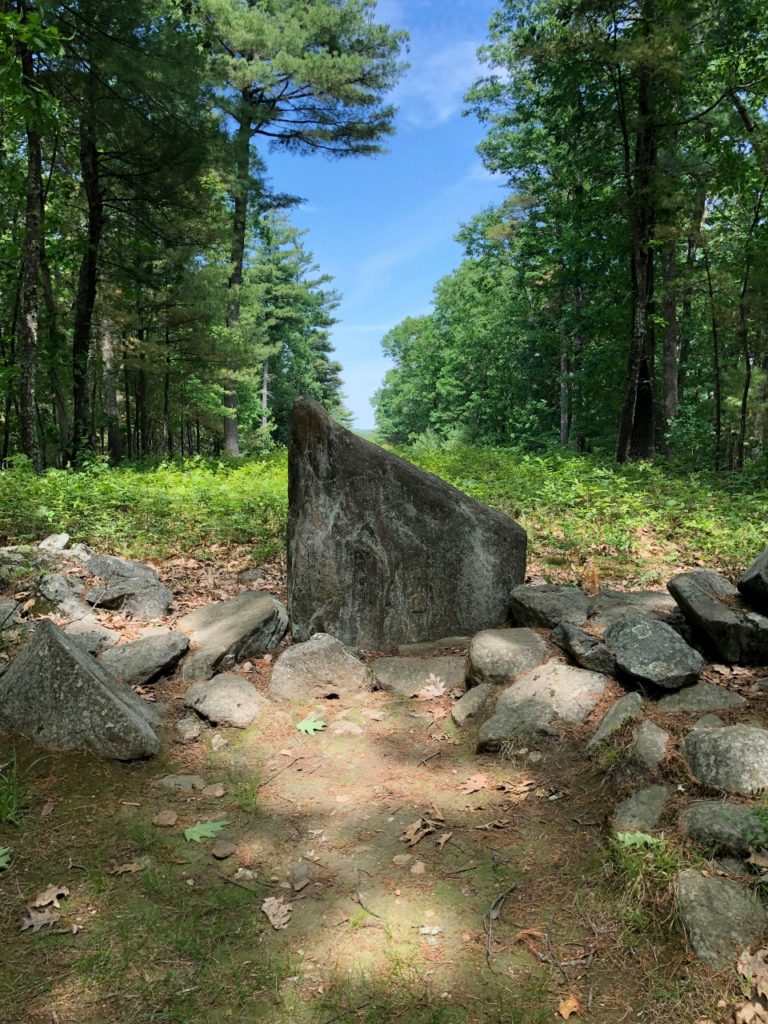
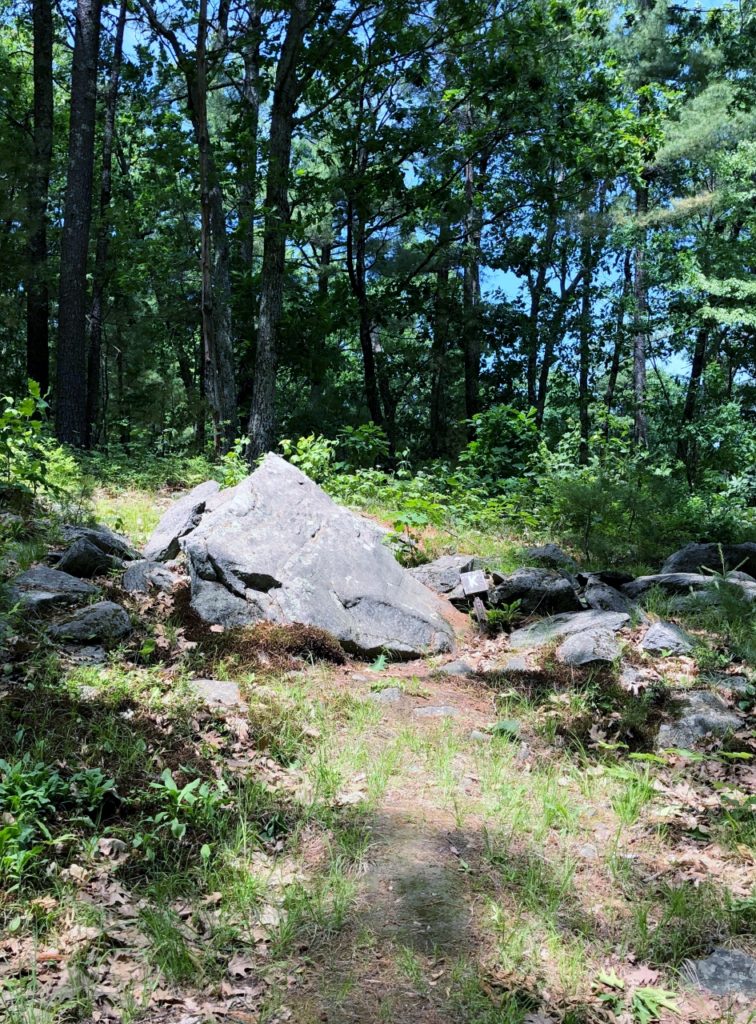
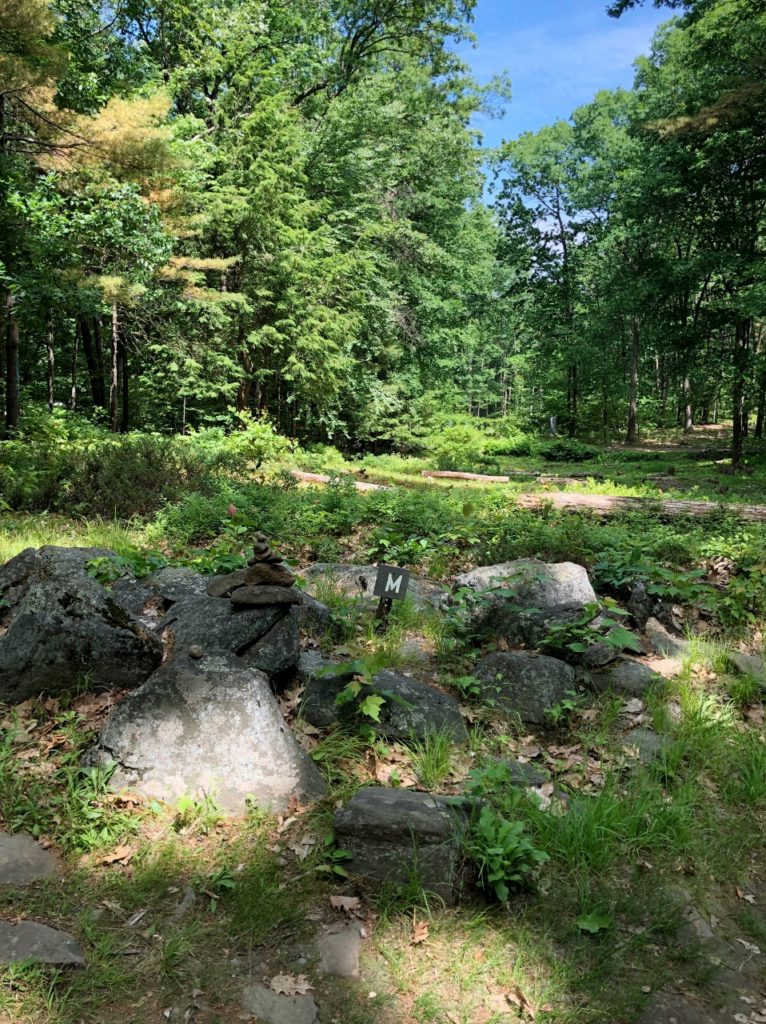
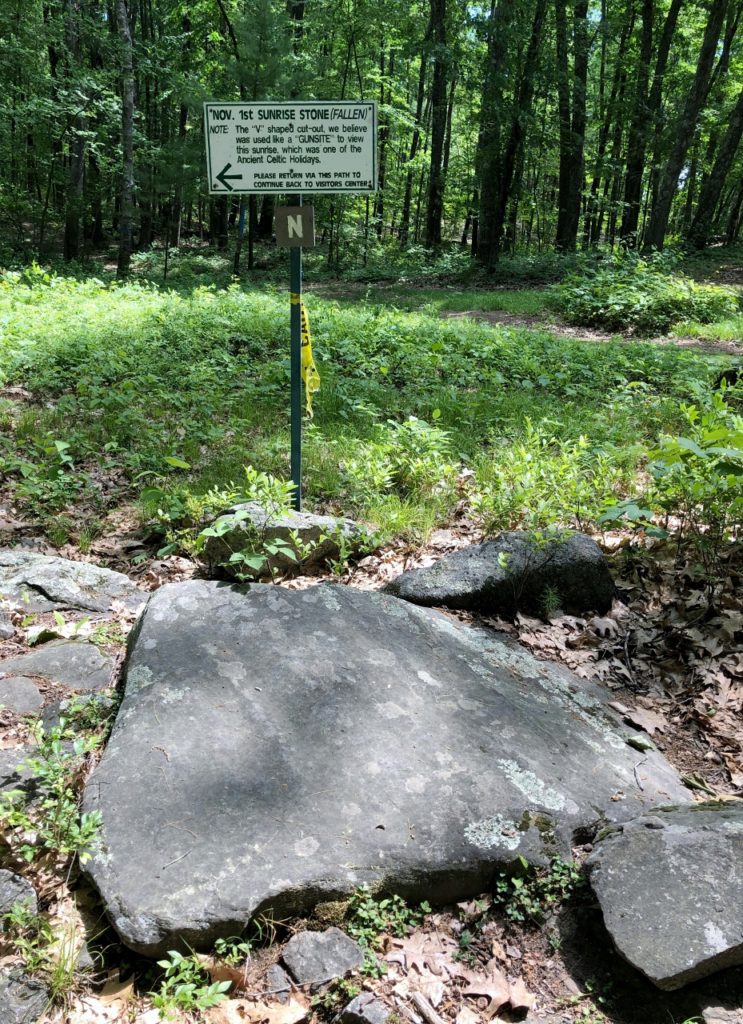
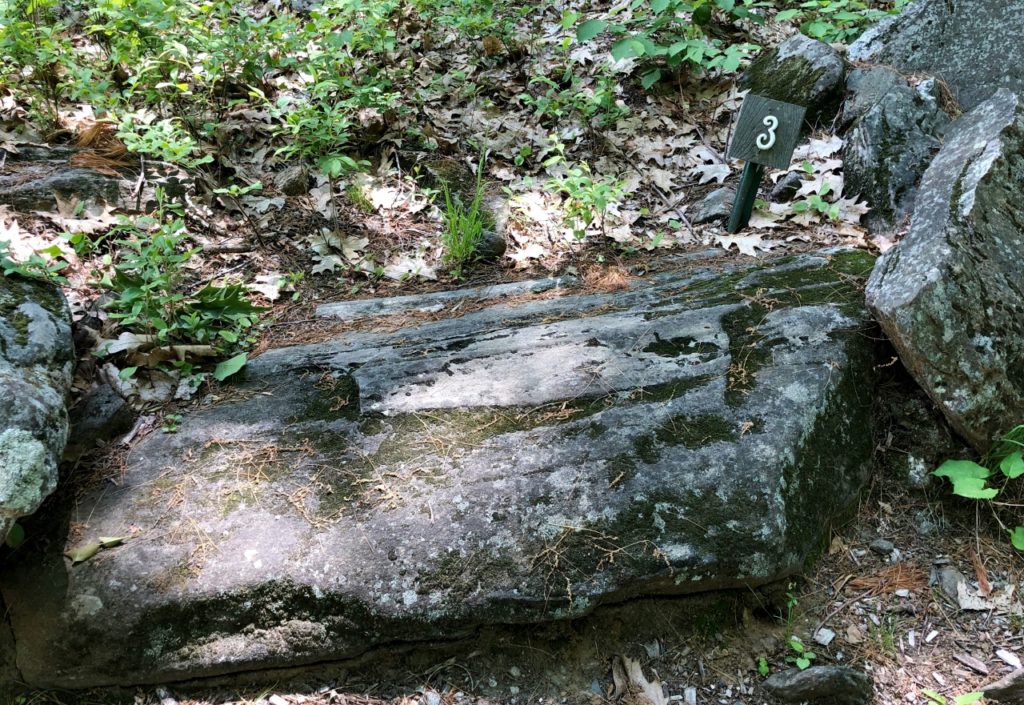
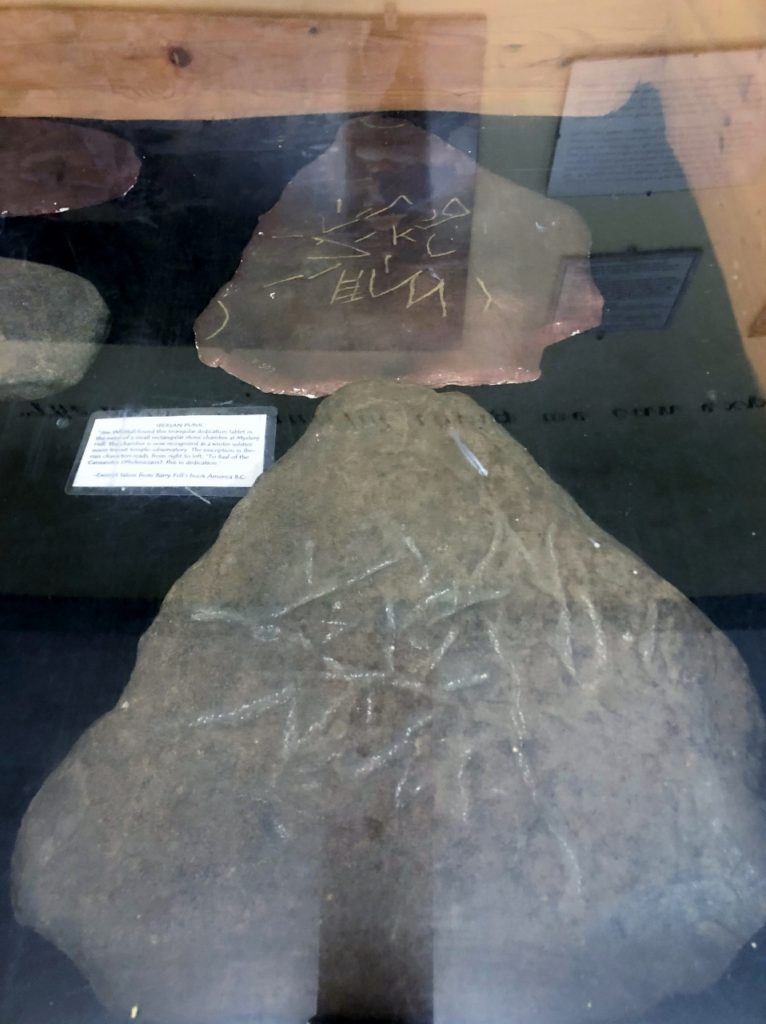
The site specifically mentions that the alignment on the Winter Solstice Sunset Monolith and the Summer Solstice Sunrise Stone are slightly off-center today. The stones still line up, just not directly in the middle. This is due to the tilt of the Earth, which changes slightly over time. However, the stones would have been accurate 4,000 years ago, and this is another method they have used to date the site. Another fun fact for you is that a line can be drawn from the center of this site, through the Summer Solstice Sunrise Stone, and if you continue the line for long enough, the line will run through the Summer Solstice Trilithon at Stonehenge in the UK! Fascinating!
The museum section of the visitor center/gift shop, although small, is worth checking out. The stones containing the Phoenician and Ogham carvings are on display in a glass case, as are the manacles that were uncovered in the Pattee Area. There are some Native American artifacts, and a model of the astronomical site. The current owners of the site are actually on site and run the place, and they are very friendly and very informative. I thoroughly enjoyed our stop here! We spent several hours, because I am a nerd! To plan a visit, check out their website!


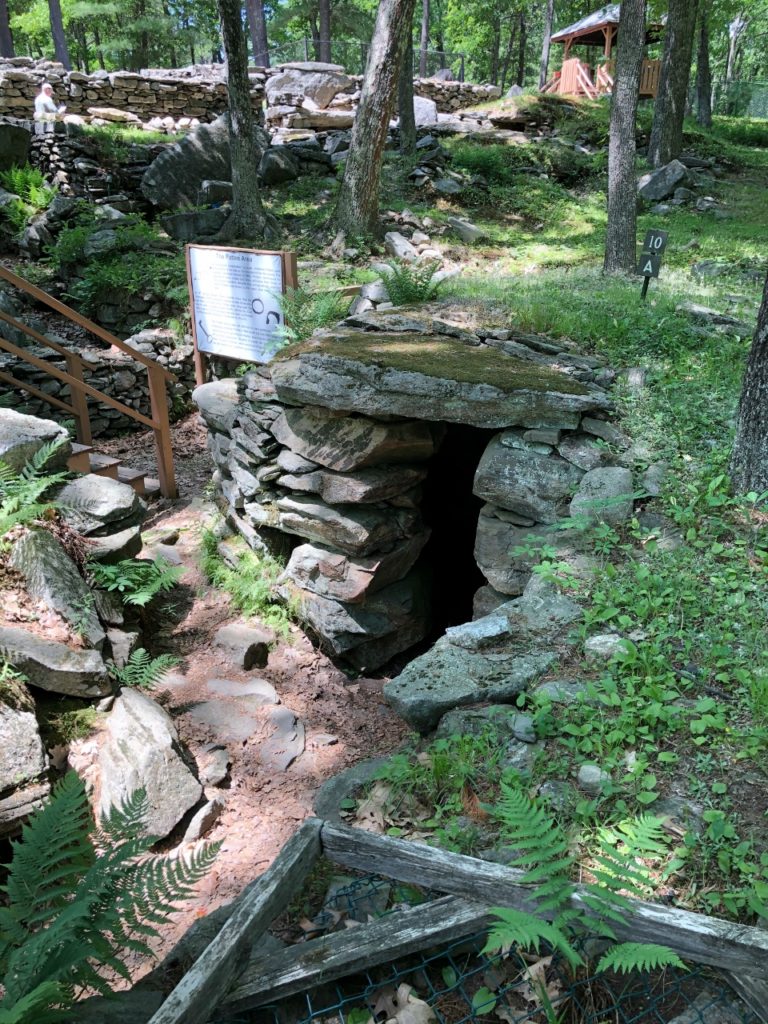
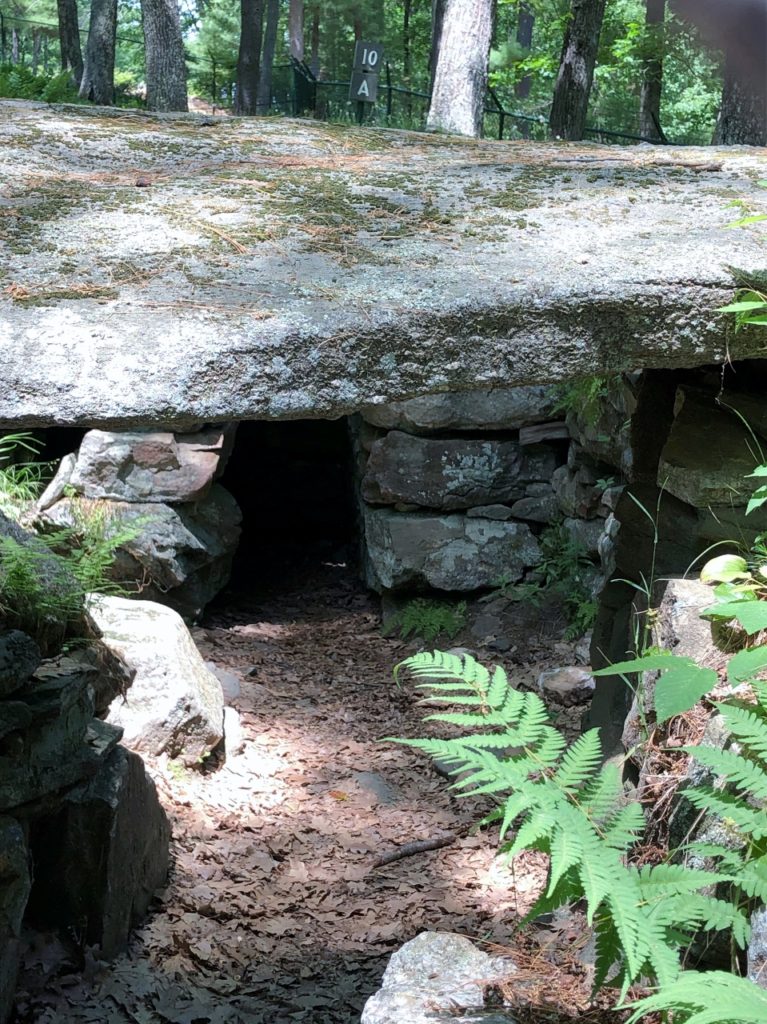
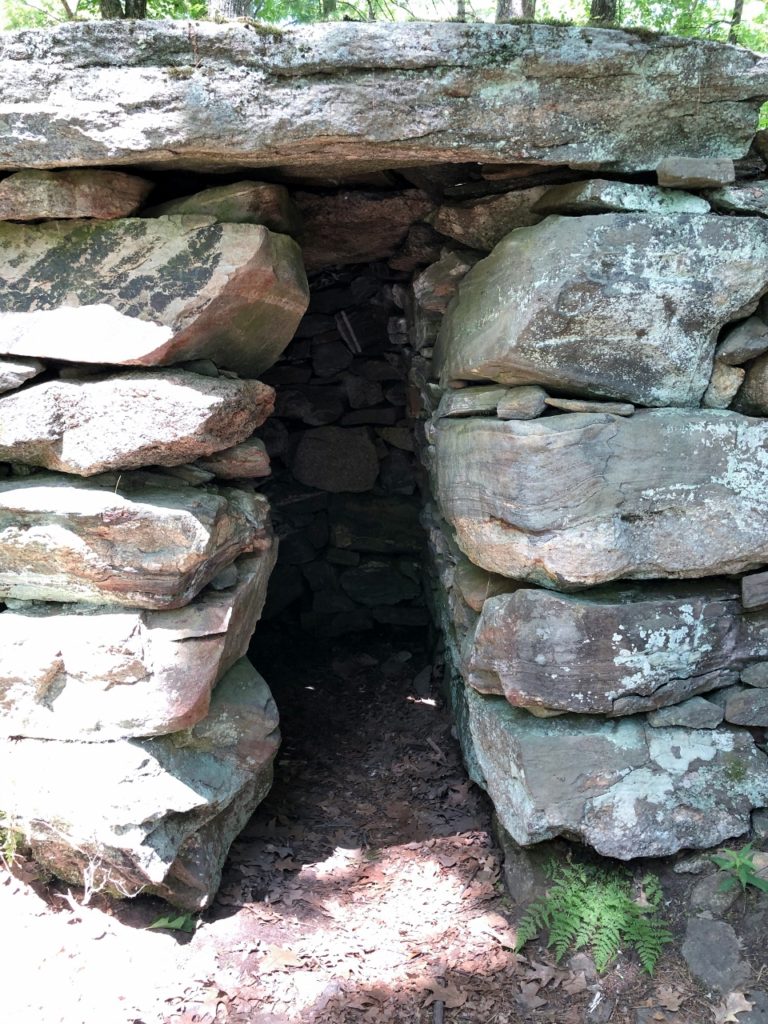
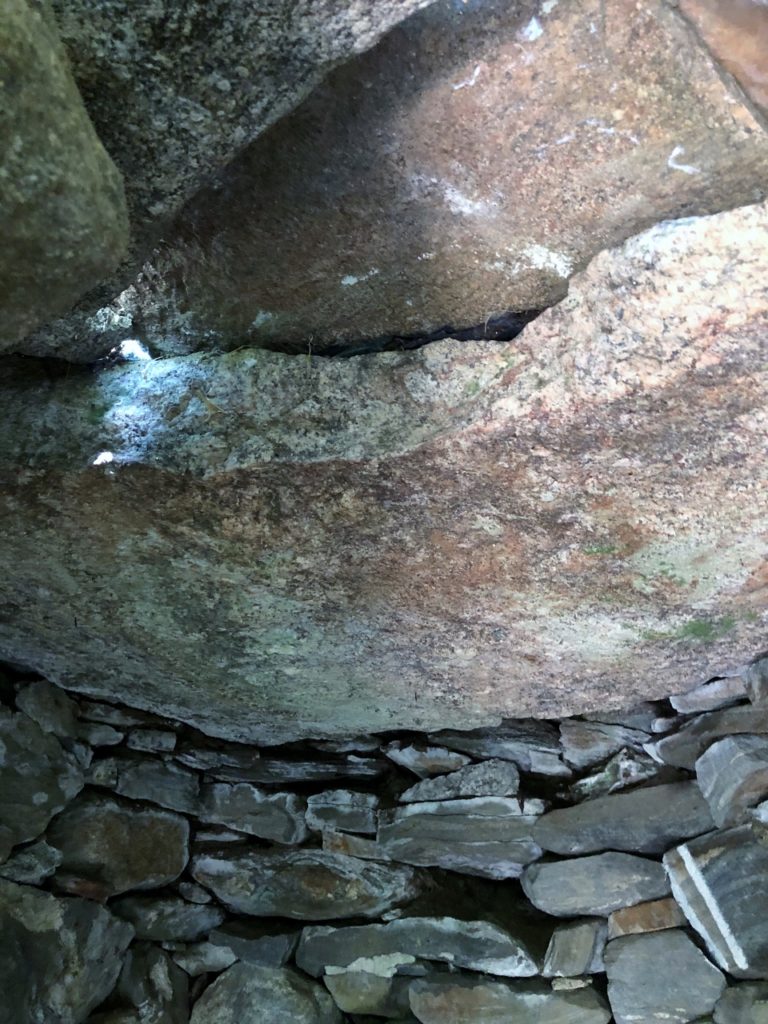
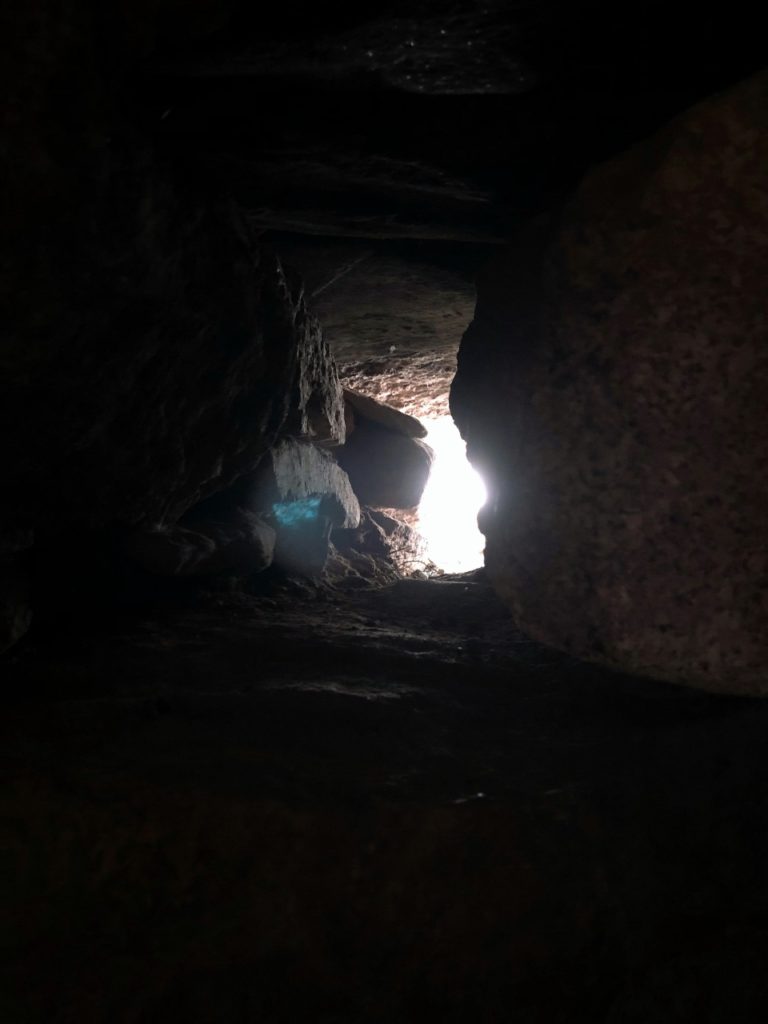
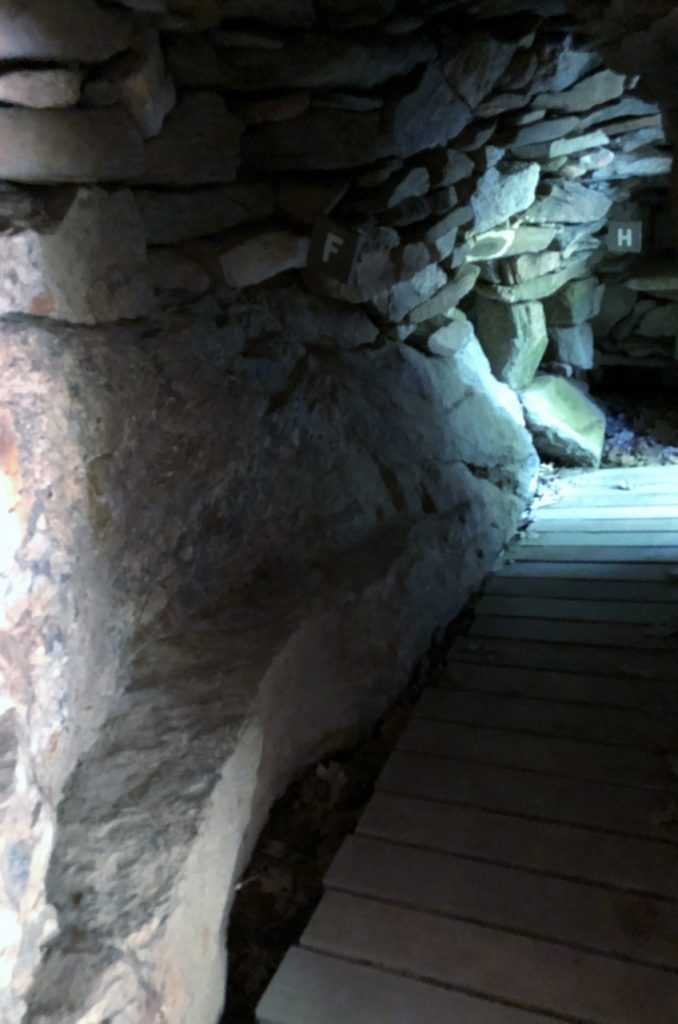
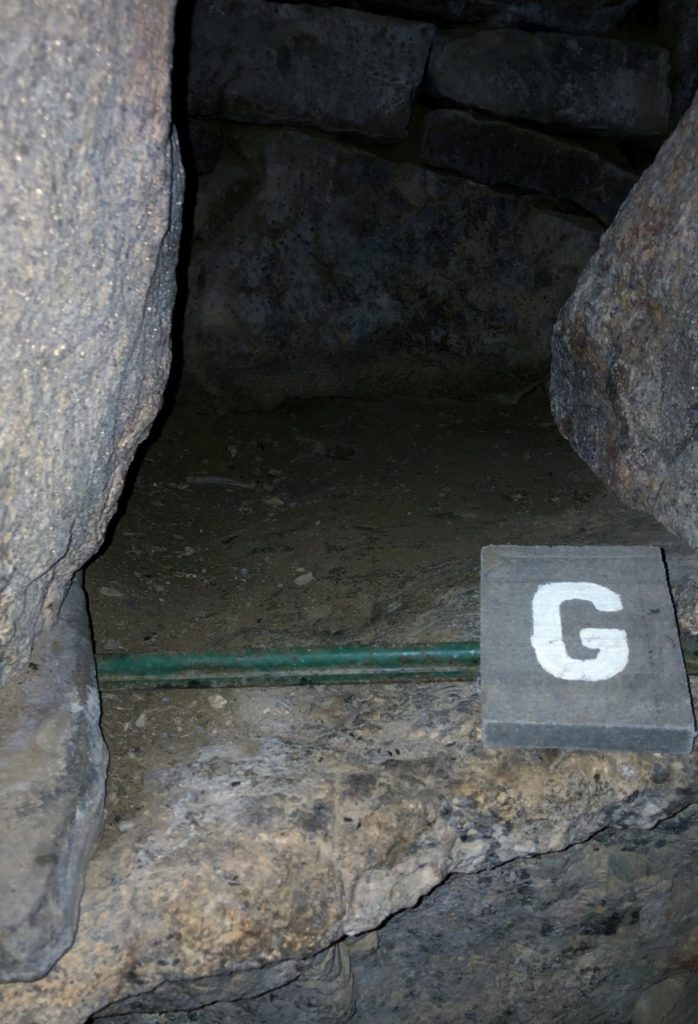
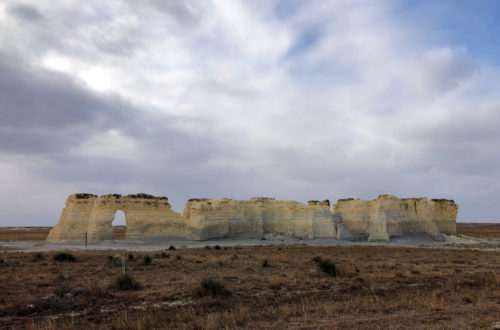


2 Comments
Charlene
I was just in Salem, NH two weeks ago to visit my uncle. Looks like he’s going to be getting another visit soon! What a neat place!
Ness
You definitely should check it out. It was very interesting!